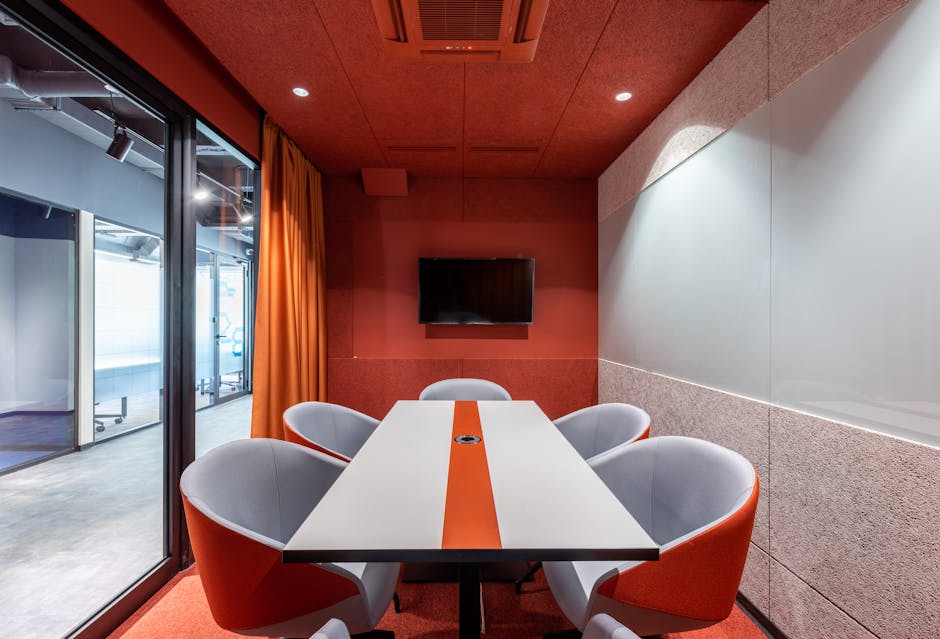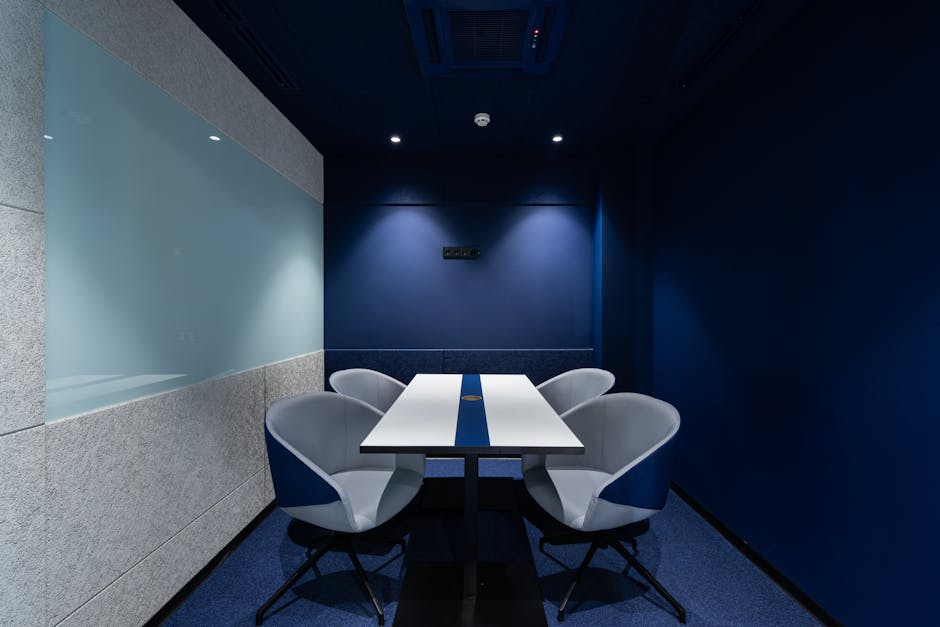10 Conference Room Design Mistakes to Avoid for Optimal Productivity
“Conference room design plays a crucial role in fostering productive meetings and collaborations. This article explores the top 10 mistakes to avoid when designing your conference room, focusing on TV size, placement, table dimensions, and more, to ensure an optimal meeting experience for your team. ”

Conference rooms are the hub of collaboration and decision-making in any office. However, poorly designed conference rooms can hinder productivity and lead to frustrating meeting experiences. In this article, we'll explore the top 10 conference room design mistakes to avoid, ensuring your meeting space is optimized for success.

1. Choosing the Wrong TV Size
One of the most common mistakes in conference room design is selecting a TV that's either too small or too large for the space. A small TV can strain eyes and make it difficult for participants to see important details, while an oversized TV can be overwhelming and distracting. To determine the best TV size for your conference room, consider the room dimensions and the average viewing distance.
2. Improper TV Placement
Placing the TV too high or too low on the wall can lead to neck strain and discomfort for meeting participants. As a general rule, the center of the TV should be at eye level when seated. Additionally, avoid placing the TV in a position where glare from windows or lighting can interfere with visibility.

3. Neglecting Acoustics
Poor acoustics can make it difficult for participants to hear and be heard, leading to frustration and miscommunication. To improve acoustics, consider using sound-absorbing materials such as acoustic panels, carpeting, or curtains. Avoid hard surfaces that can cause echoes and reverberation.
4. Inadequate Lighting
Proper lighting is essential for a productive meeting environment. Insufficient lighting can cause eye strain and fatigue, while harsh or glaring lights can be distracting. Aim for a combination of natural and artificial light sources, with the ability to adjust brightness levels as needed. Discover more space with smart nudges and new anal to optimize your conference room layout.
5. Overcrowding the Room
Cramming too many people into a small conference room can lead to discomfort and decreased productivity. Ensure there's enough space for participants to move around and collaborate effectively. As a general guideline, allow for at least 20-30 square feet per person when designing your conference room.
6. Choosing the Wrong Table Size
The conference table is the centerpiece of the room, and its size should be proportional to the space. A table that's too large can make the room feel cramped, while a table that's too small can limit collaboration. Consider the number of participants and the room dimensions when selecting a table size.

7. Neglecting Cable Management
Tangled cables and cords can create a cluttered and unprofessional appearance in your conference room. Invest in cable management solutions such as cable trays, floor boxes, or wireless technology to keep your meeting space organized and visually appealing.
8. Ignoring Ergonomics
Uncomfortable seating and poor ergonomics can lead to fatigue and decreased focus during meetings. Choose chairs with proper lumbar support, adjustable heights, and comfortable padding. Ensure the table height allows for comfortable typing and writing.
9. Failing to Incorporate Technology
In today's digital age, a conference room without the necessary technology can hinder productivity. Ensure your meeting space is equipped with reliable digital meeting conference room signage and video conferencing equipment, as well as ample power outlets and charging stations for devices.
10. Overlooking Flexibility
A versatile conference room can accommodate various meeting types and group sizes. Consider incorporating flexible furniture arrangements, such as modular tables and movable partitions, to adapt the space to different needs. Workplace design strategies to attract retain talent can help create a dynamic and adaptable conference room.

By avoiding these common conference room design mistakes and focusing on creating a space that promotes collaboration, comfort, and productivity, you can ensure your meetings are effective and efficient. Remember to consider factors such as TV size and placement, acoustics, lighting, ergonomics, and technology when designing your ideal conference room.